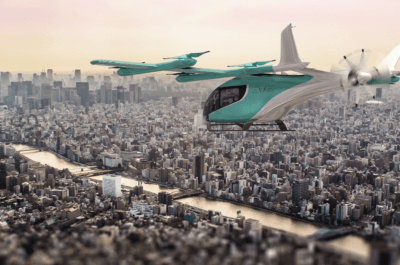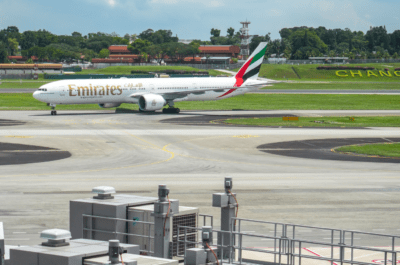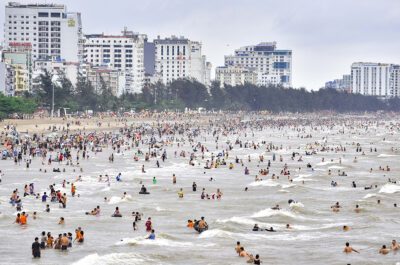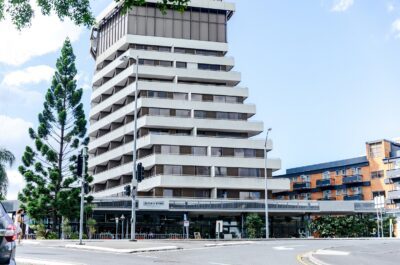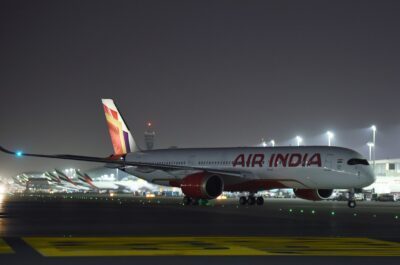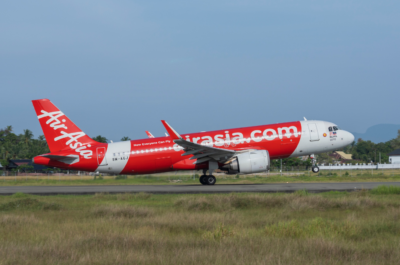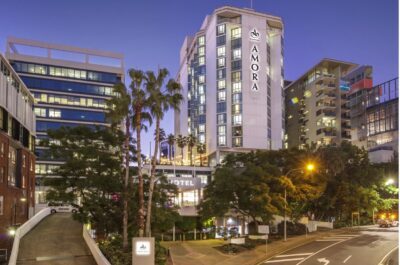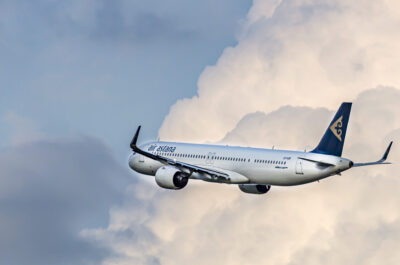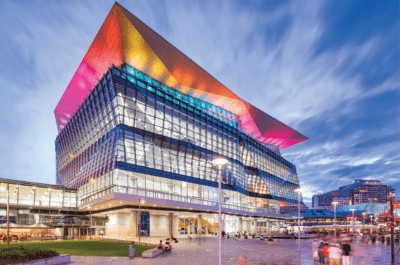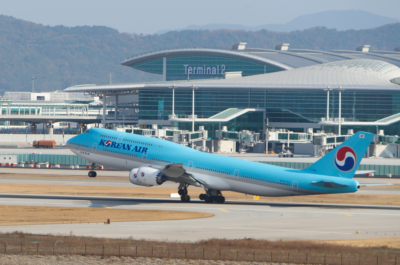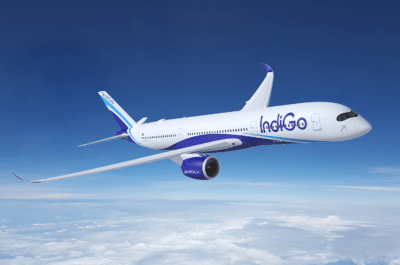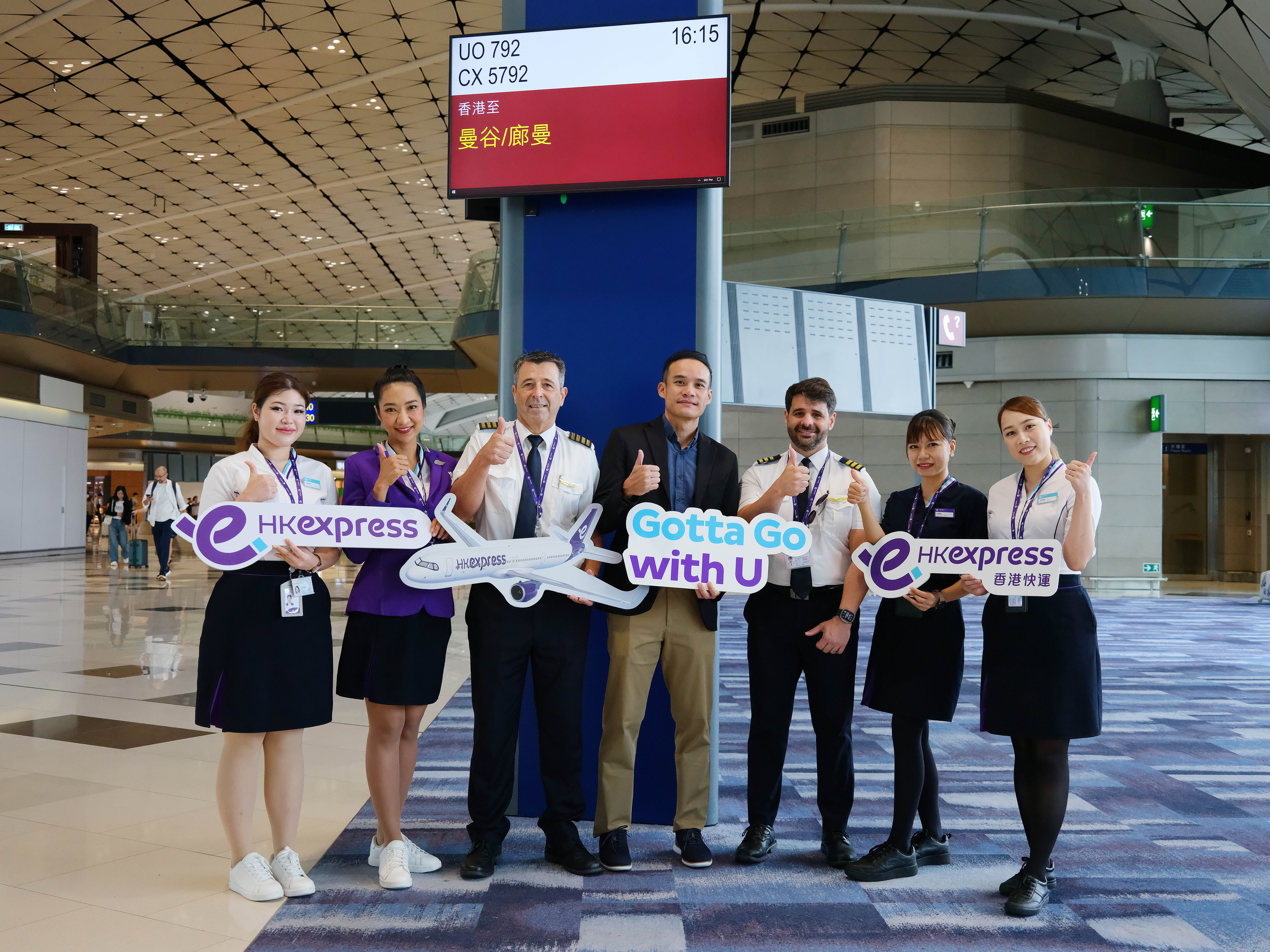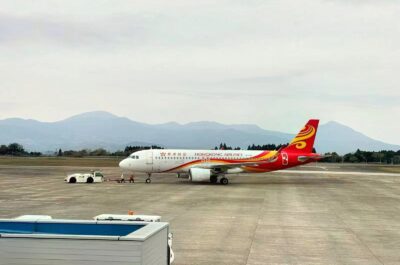…
Competition in air transport markets is only possible with strong hub airports that offer a high number of connecting flights
Hubs are nothing new in the air transport industry. As soon as air transport de-regulation took off in the late 1970s in the United States, US carriers developed a system of hub-and-spoke airports. Under the pressure of competition, airlines dropped point-to-point flights on secondary routes in favour of flights connecting
with each other via a larger airport. Thus the hub concept was born.
The ‘hub-and-spoke’ model allows for smaller destinations to be connected via a ‘hub’ airport where a direct service would not be feasible. A McKinsey study for the International Air Transport Association (IATA) estimates that 20% of intra-European traffic and 40% of US domestic traffic would not be able to make the same journey if the network structure were not in place. After permeating the USA, the model reached its maturity in the 1990s in Europe and is now spreading to the rest of the world. Today’s larger aircraft such as the Airbus A380 or the extended version of the Boeing B-747 will only reinforce this trend.
TYPES OF HUBS
States with rather small population bases generally evolve into efficient hubs as they are forced to look for customers beyond their own national borders. This is the strategy followed by most Gulf airports – Abu Dhabi, Bahrain, Dubai or Doha – and Singapore and Hong Kong SAR in Asia. Hubs can be divided into three categories:
Primary hubs are global, connecting the entire world. These hubs dominate in Europe, with Amsterdam, Frankfurt, London Heathrow,Madrid and Paris CDG. In the USA,Atlanta, Chicago, Los Angeles and New York (both JFK and Newark) enter this category, and in the Gulf and Asia Pacific area, Dubai, Doha, Bangkok, Hong Kong SAR, Seoul and Singapore play a similar role.
Secondary hubs offer a less-extensive global network than primary hubs or can also specialise in a particular traffic segment. Airports such as San Francisco, Toronto or Washington DC in North America; Copenhagen, Milan, Munich, Vienna or Zurich in Europe; Kuala Lumpur, Osaka, Shanghai or Sydney in the Asia Pacific area are typical secondary hubs. In Europe, Vienna is a perfect example of a niche hub as it specialises in traffic to Central/Eastern Europe as well as to Asia.
Regional hubs, sometimes called ‘mini-hubs’, offer regional connections in niche markets. They prove particularly popular in Europe, with airports such as Lyon, Prague or Stockholm having a fair percentage of passengers in transfer on local routes.
ALLIANCES FURTHER STRENGTHEN HUBS
As economic globalisation strengthens, needs for global air links emerge. Alliances among major carriers are one of the answers to travellers’ needs for these global networks. The strength of alliances is naturally sustained by hub-and-spoke operations.
With more connections provided by one airline or one alliance, a specific market will then have a greater chance to dominate traffic patterns in a region. The air network value will consequently increase at the same pace as the number of connections offered and will also boost the number of travellers.
But passengers are not the only party that benefits from a hub’s larger choice of destinations and higher number of frequencies. Regional economies also gain worldwide access and become part of global markets, generating economic growth in return.
The economic importance of hubs was highlighted in a report from IATA released in early 2006. In this global survey, 80% of surveyed companies valued the presence of a national air transport hub as of greatest importance in determining whether or not to invest in a particular destination, while 18% cited the absence of air links as a major investment deterrent. In China, for instance, 30% of firms reviewed their investments due to a perceived lack of air transport links.
HUBS ARE COMMERCIALLY VIABLE
More than ever, a competitive environment justifies the economic rationality of a hub-and-spoke system. The following outlines some of the major reasons for moving towards hub operations.

Source: Luc Citrinot. Modelled after an Air France study on Paris CDG
- Network rationalisation
Network rationalisation continues as competition increases. Airlines tend to concentrate on the most profitable routes, abandoning flights to secondary destinations. A good example of such a move came recently from both Malaysia Airlines and Indonesia’s Garuda. In a move to revert deepening losses, Malaysia Airlines started reducing its network last year as the airline estimated losses on 60% of its flown routes. Flights to secondary estinations such as Manchester, Vienna, Padang or Xiamen have already been dropped. In Indonesia,Garuda recently expressed its wish to transfer its long-haul flights from Bali to Australia and Japan back to Jakarta in a move to strengthen its hub operations and save on cost.
- Controlling costs
In a competitive environment, an airline’s best tactic to save money is to concentrate its human and technical resources in a single location; thus, the hub system is most effective. Garuda recently recognised that running long-haul operations from Bali and Jakarta was equivalent to managing two different airlines as it required basing crews, a dedicated fleet and technical maintenance in both locations. While mega carriers such as Lufthansa or American Airlines are able to simultaneously manage hubs at multiple locations, such an operation is extremely costly for medium-sized airlines such as Garuda.
- New aircraft with higher passenger capacity
The growing fleets of many airlines and the emergence of new superjumbo aircraft also justify an expansion of hub operations. With the arrival of the Airbus A380, which can handle up to 550 passengers, airlines will have no choice but to look beyond their own national markets for new customers. It is no coincidence that A380 customers in Southeast Asia include Singapore Airlines, Malaysia Airlines and Thai Airways – all are flag carriers of the region’s three largest international hubs.
- New consumption habits for passengers
Passengers today seek access to more destinations worldwide but also accept that they will probably have to transfer at least once to reach their final destination. In the aforementioned IATA survey, over 90% of the questioned firms stated that transfers between flights by the same airline or by the same alliance are “very
acceptable” or “sometimes acceptable”.
WHICH HUBS IN ASIA?
Asia has long been ready to handle the increasing traffic volume. Over the last decade, the continent saw the largest number of Greenfield (newly built) airports opening to the public.Hong Kong Chek Lap Kok, Kuala Lumpur International, Shanghai Pudong, Guangzhou Baiyun, Padang Minangkabau (Indonesia), Osaka Kansai, Nagoya Centrair, Seoul Incheon and, most recently, Bangkok Suvarnabhumi are among the newest additions to Asia’s air transport infrastructure. However, despite the opening of glitzy new facilities, few of those airports have established themselves as full hubs, beside the fact that all major air carriers claim to operate efficient hub-and-spoke systems.
Some figures provided by airports on transfer passengers give an idea of the reality of a hub operation in the region. The top performer is currently Hong Kong SAR. While official figures on transfer passengers are not reported by the Civil Aviation Authority, Cathay Pacific, Hong Kong SAR’s home carrier, indicates that half of its passengers – approximately eight million or roughly 20% of all recorded passengers at Chek Lap Kok Airport – are in transfer. Meanwhile, 16% of all passengers are in transfer in Singapore (slightly over 5 million/year) and 12.2% in Seoul Incheon (over 3 million/year), but only 4% of passengers are in transfer through Kuala Lumpur (approximately 907,000 in 2005). In Bangkok, Thai Airways indicates that approximately 30% of its passengers are taking connecting flights.
These numbers are a far cry from European airports, where transfer passengers at primary and secondary hubs fluctuate between 25% and 45%. By comparison, hubs in Asia are far from having reached their maturity. It also explains why secondary or regional/domestic hubs are limited in scope in the region. Up to now, only three major Asian carriers are systematically building up their connecting network: Singapore Airlines, Cathay Pacific in Hong Kong SAR and Korean Air in Seoul. Hub operations for both Cathay and Singapore Airlines were in fact a logical step as both carriers lack a large national market. Korean Air reviewed its hub policy in early 2000, when the airline moved most of its operations (with its Skyteam partners) to the new Incheon Airport, positioning itself as an alternative gateway to Japan and China.
Singapore, Seoul and Japanese airports (Osaka Kansai and Tokyo Haneda/Narita) are also hubs for two major alliances. But even a close look at networks offered out of each major hub in Asia show flaws in terms of geographical coverage. Some examples in Southeast Asia: Bangkok remains very weak in terms of connections to secondary destinations in Indochina and has limited connections to Indonesia. Singapore has no connections to Central Asia and still lacks connections to Lao PDR as well as secondary cities in Japan. Kuala Lumpur struggles to play in the same field than the two dominant hubs of Bangkok and Singapore. Jakarta and Manila can only be considered as domestic hubs, partially due to the absence of an alliance integrating both countries’ national carriers.
In Northeast Asia, the next integration of Chinese carriers into major alliances will finally position Beijing, Guangzhou and Shanghai on par with Hong Kong SAR within the next five years. Due to its sensitive political situation, Chinese Taipei lost any opportunity to affirm itself as a viable hub despite its excellent position as a crossroads between China and Southeast Asia. In Japan, Tokyo is one of the largest air transport gateways in the world.
However, it has not succeeded in becoming an efficient hub as air operations are split between Haneda, which welcomes the majority of domestic traffic, and Narita, Japan’s prime international airport. Nagoya and Osaka Kansai both appear to be secondary hubs.

Source: Airport authorities; consultation with Luc Citrinot
Source: SRS Analyser January 2007
Bangkok and Singapore dominate in Southeast Asia
In Southeast Asia, dominant airports have for years been Bangkok and Singapore. However each offers different traffic patterns. Bangkok still profiles itself mainly as a leisure hub, attracting a variety of airlines flying for holiday purposes. What could first appear as a weakness for Bangkok turns into an advantage in terms of network positioning in the region.
Despite lower yields out of Bangkok compared to Singapore, airlines have tended to favour the Thai capital over the last few months to the detriment of Southeast Asia’s business metropolis.
“The opening of Suvarnabhumi airport will recapture part of the business traffic thanks to its first-class facilities and consequently strengthen Bangkok as a hub. And many airlines see the additional traffic generated by leisure travellers as an incentive,” explains Lars Sandahl, Chief Commercial Officer of Scandinavian Airlines International (SAS). Consequently, the airline decreased its frequencies to Singapore to concentrate in Bangkok. Other carriers such as Hungary’s Malev and Austrian Airlines took similar decisions to serve Southeast Asia only out of Bangkok.
In terms of frequencies, Star Alliance dominates in both Bangkok and Singapore, with respective market share of 35.6% and 42% when calculated in weekly frequencies. The relatively weak position in Bangkok is due to the lack of aircraft at Thai Airways and also the extremely competitive market in both regional and intercontinental routes. Bangkok is served by 84 airlines offering a total of 1.2 million seats per week (as of January 2007) linking 131 destinations. In comparison, Singapore’s Changi Airport has 62 airlines offering 926,000 seats to 106 destinations.
Changi remains Asia’s primary hub to Australia as well as to Indonesia. Recent increases in frequencies to India also make it an easy transfer point from Northeast to South Asia. While Bangkok dominates in terms of total passenger traffic, the number of flight frequencies out of Bangkok did not progress as quickly as other airports from 2001 to early 2007. According to data collected by SRS Analyser, the number of weekly frequencies was up by only 7.8%. By comparison, Singapore’s weekly flight frequency grew by 8.3% during the same period, while Kuala
Lumpur grew by 19.8%, Hong Kong SAR by 34.1% and Seoul Incheon by a staggering 96%.
Air transport constraints in China and Japan boost Hong Kong SAR and Seoul
Hong Kong SAR and Seoul Incheon dominate in Northeast Asia as both airports position themselves as gateways to two giant markets, China and Japan. Hong Kong SAR has long been a traditional gateway to China, and the recent acquisition of China’s regional carrier Dragonair by Cathay Pacific will further boost the airport’s positioning as a prime hub for China. By joining the Oneworld alliance, Dragonair boosts the total number of Chinese cities served by the alliance to Mainland China. From Hong Kong SAR, Dragonair operates overhaul to 19 points in the Mainland with some 400 flights a week. A reduction in the ‘Minimum Connecting Time’ between Cathay Pacific and Dragonair led to some 451 more same-day connections each week for passengers travelling through Hong Kong SAR.
*FY 1/04/05 to 31/03/06
Source: Airports; Aéroportuaire Magazine
Source: SRS Analyser January 2007
TravelDailyNews Asia-Pacific editorial team has an experience of over 35 years in B2B travel journalism as well as in tourism & hospitality marketing and communications.



